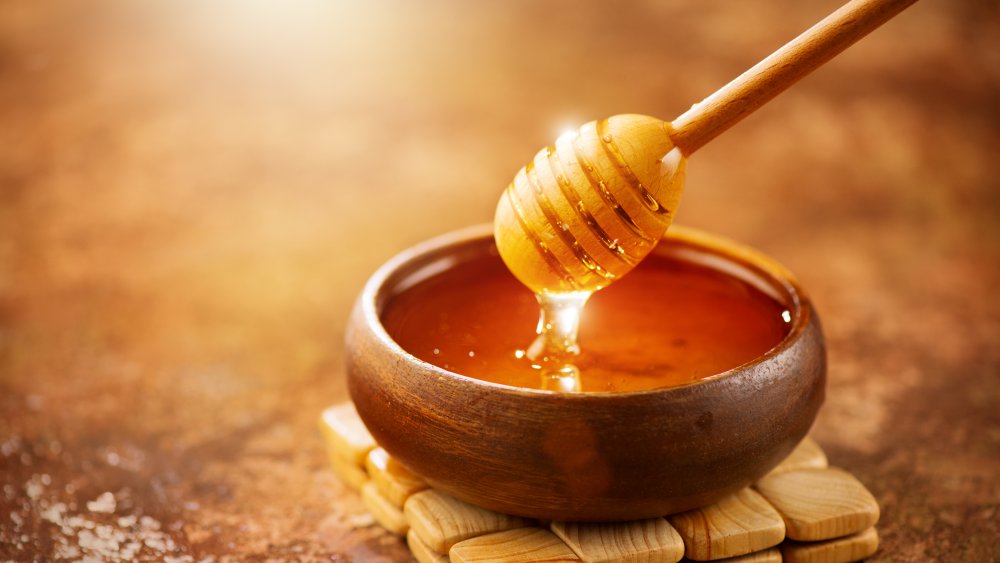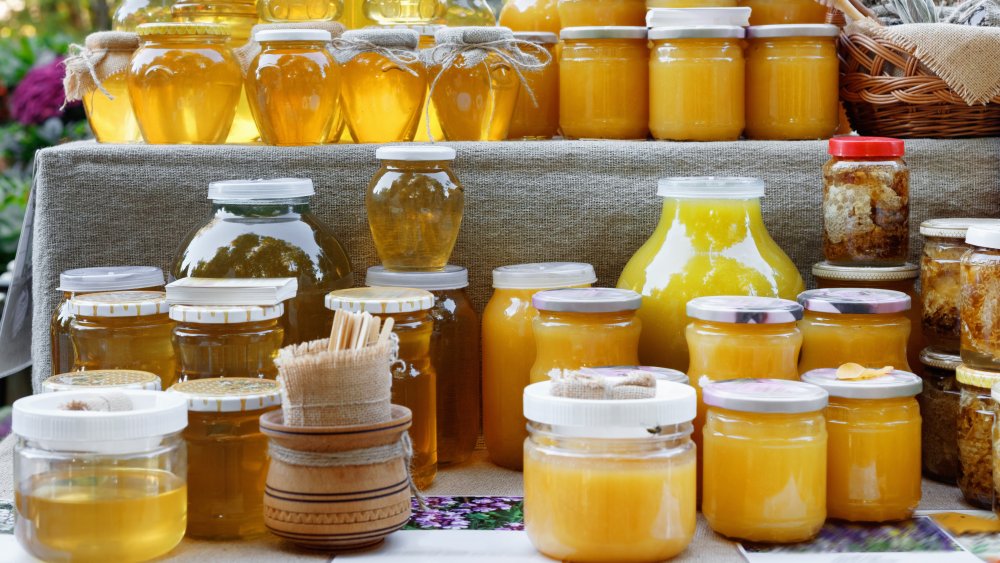This Is The Trick To Fixing Crystalized Honey
Honey offers a plethora of benefits if eaten on a regular basis. Considered a prebiotic, honey has loads of antioxidants and can help combat inflammation. This and its sweet taste make it a beloved sweetener, and it has the sales to show for it. The global honey market was an estimated $9 billion in 2019, and is expected to reach over $14 billion by 2025, according to Grand View Research. Although, when it comes to eating, there's one minor annoyance that happens with honey: crystallization.
You know what we're talking about. You grab your wheat bread out of the toaster, slather on a thick layer of crunchy peanut butter, and grab the squeezable honey for that gorgeous golden drizzle of sweetness, and nothing. No matter how much you squeeze and shake that honey bottle, nothing comes out. What gives? Do you toss it out? We hope not, because unless it's tainted, honey never goes bad — archaeologists have found honey that dates back more than 5,000 years (via Bee Mission) — and this can be fixed. So, why does crystallization happen, and how can you bring your honey back to life — quickly?
How to fix honey if it crystalizes
Crystallization occurs because of honey's high sugar content. The higher the level of glucose versus fructose in your particular bottle of honey, the faster the honey will crystallize. But here's some good news: It's perfectly fine to eat crystallized honey. If you're having oatmeal, warm toast, tea, or anything hot, the crystallized honey will melt when you spread or stir it into something warm.
When you prefer not to eat crystallized honey, transforming it back to its former state is pretty easy, too, according to The Daily Meal. Depending on how much time you have, you can let it sit in a bowl of warm (not boiling) water, and stir the honey until it liquifies. Or, take off the top and microwave it in short intervals until it can be stirred. If you're worried about possibly destroying honey's delicate enzymes through heating, only heat what you need (don't heat honey over and over again), and try not to heat honey in a plastic jar (via Asheville Bee Charmer).

